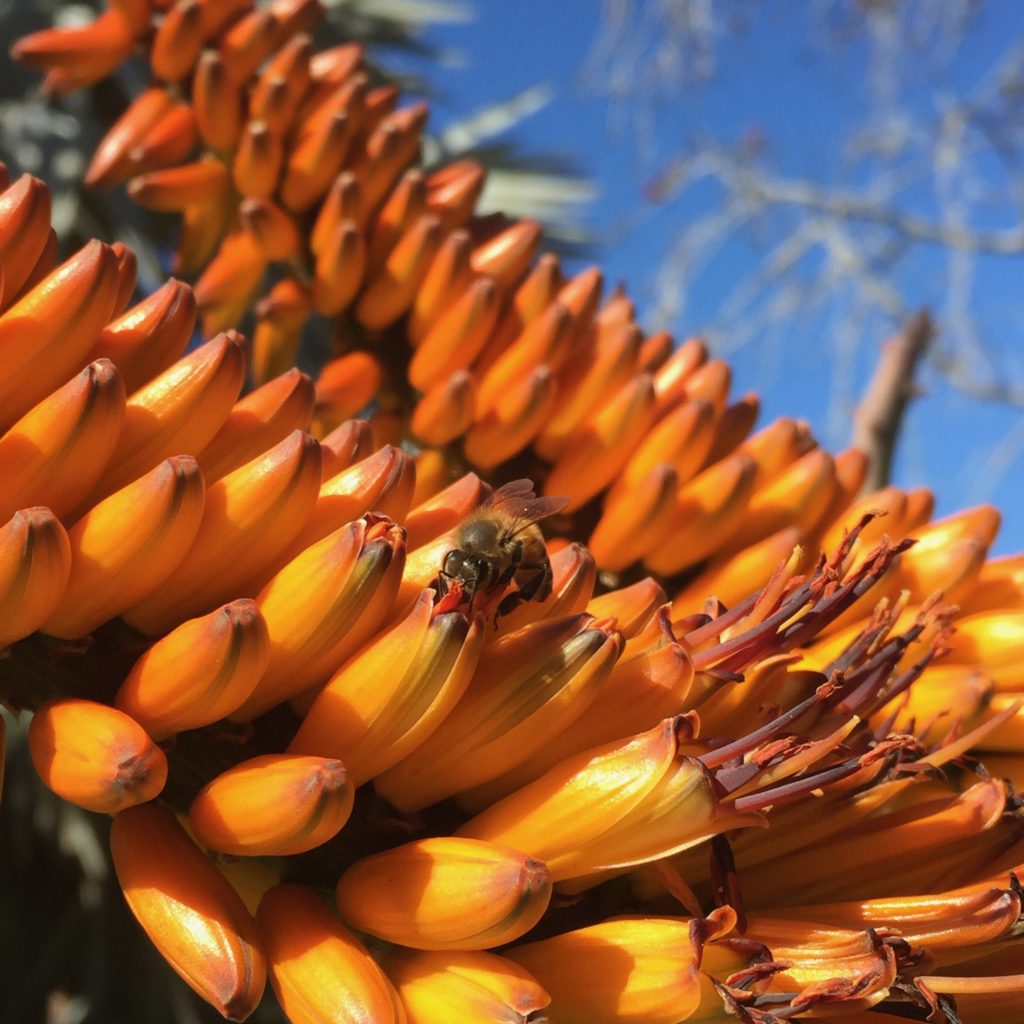
Photo by Dave Vitolo
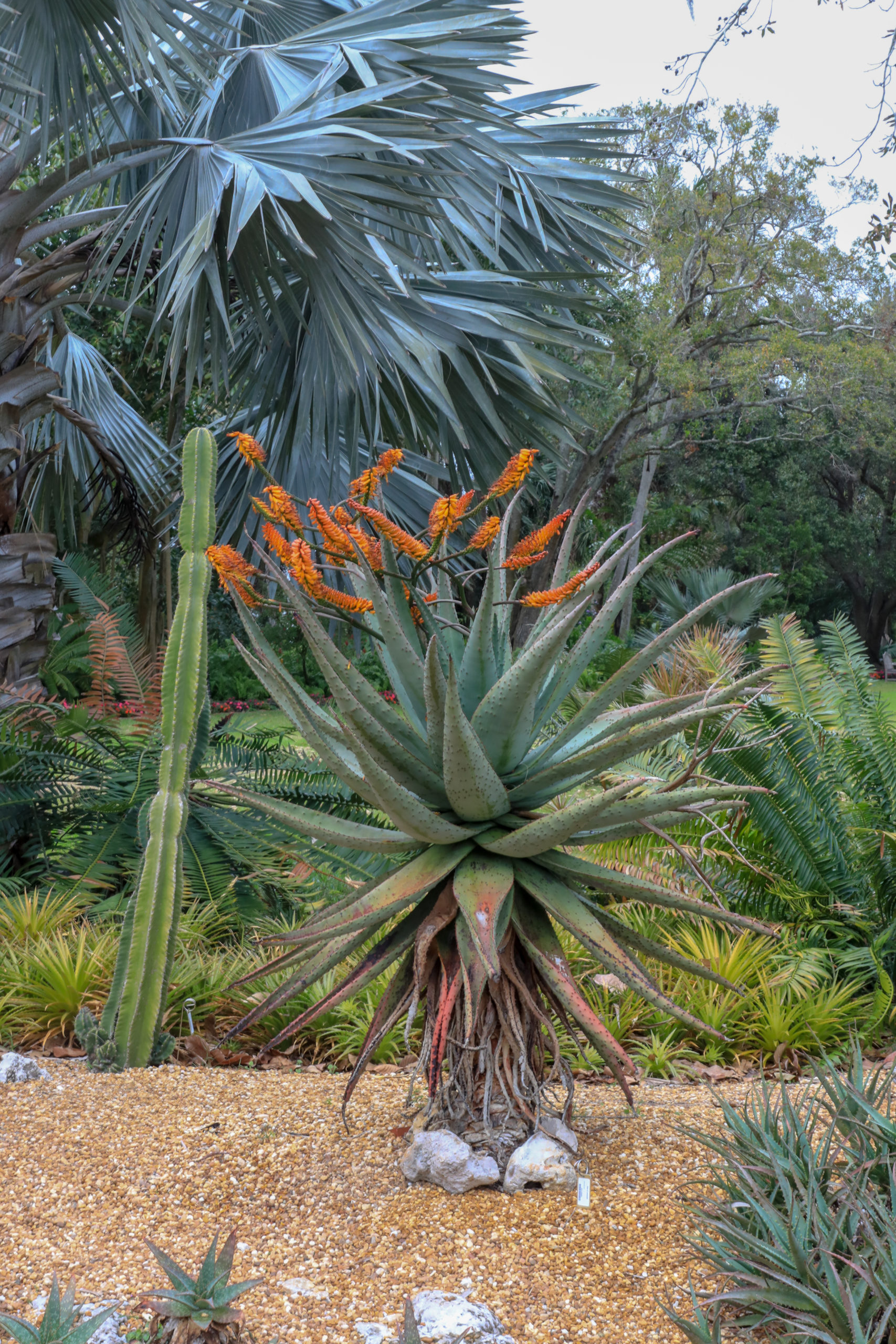
Photo by Dave Vitolo
Aloe marlothii (Mountain Aloe) is a beautiful succulent that displays grayish-green leaves all year long. During the winter months, it is in full bloom and at the downtown campus of Selby Gardens, visitors can find this succulent within the Desert Garden beside Hudson Bayou.
Mountain Aloe is a unique plant, and well known for its tall stature and showy winter blooms. There are typically 30 racemes on one stalk, which makes these flowers a favorite among pollinators like honey bees and sunbirds in its native Africa. This plant can reach heights of 8 to 10 feet tall. The Aloe marlothii at Selby Gardens currently stands at more than 8 foot tall. The common name of Mountain Aloe is derived from the geographical area that this plant thrives in, typically rocky terrain and warm mountain slopes.
Aloe marlothii is a member ofthe family Asphodelaceae, and it is indigenous to South Africa. Similar to many plants within this family, they are often used for medicinal purposes. For many centuries the sap from this and other Aloe species was commonly used for curing parasites, as well as healing sunburn or other minor skin irritations.
Like most succulents, the Mountain Aloe needs little water to thrive once it is well-established. The leaves of the plant are a good indicator of its water needs: if the plant has been under-watered, the leaves are dry and brittle and if overwatered, the leaves are full and inflated.
Make sure to look for the Mountain Aloe, and these other Aloe species that are currently in bloom this winter in the Desert Garden:
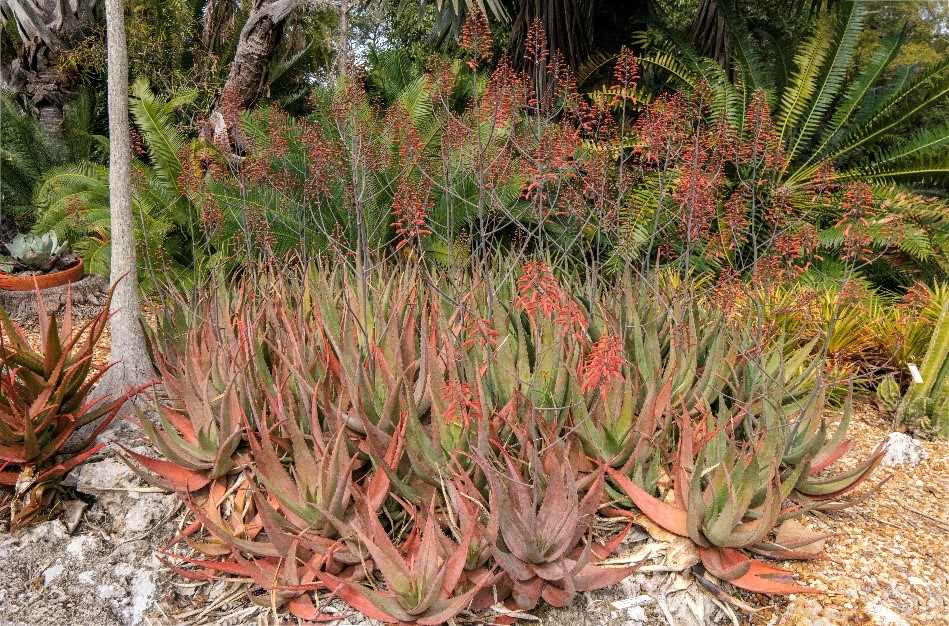
Aloe chabaudii or Dwala Aloe (photo by Aaron Fink)
Native to eastern and southern Africa – Tanzania, DR Congo, Zambia, Malawi, Mozambique, Botswana, Zimbabwe, Swaziland, S. Africa.
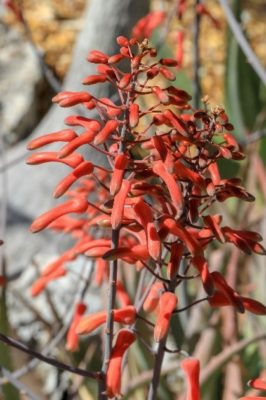
Close-up of Aloe chabaudii in bud (photo by Sandra Robinson)
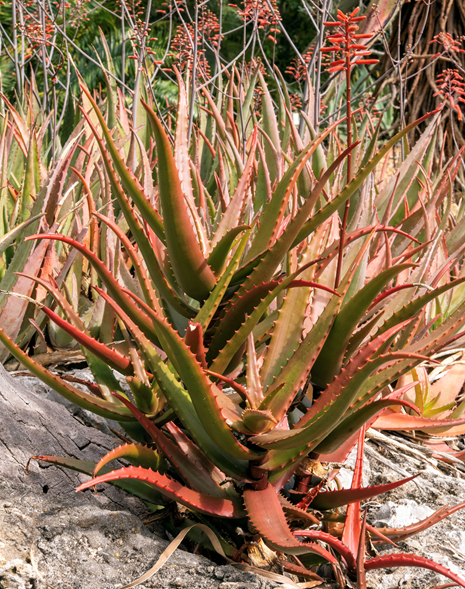
Aloe cameronii or Red Aloe (Photo by Aaron Fink)
Native to Malawi and Zimbabwe
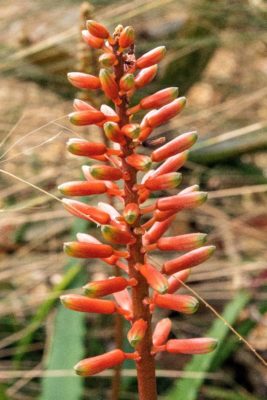
Aloe cameronii flowers about to open (photo by Aaron Fink)
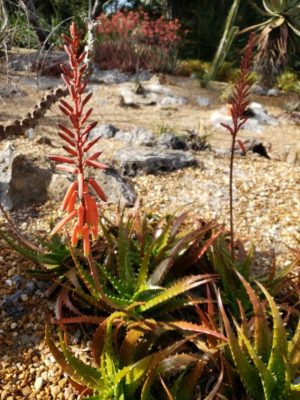
Aloe dorotheae or Sunset Aloe (photo by Shawn McCourt)
Native to Tanzania
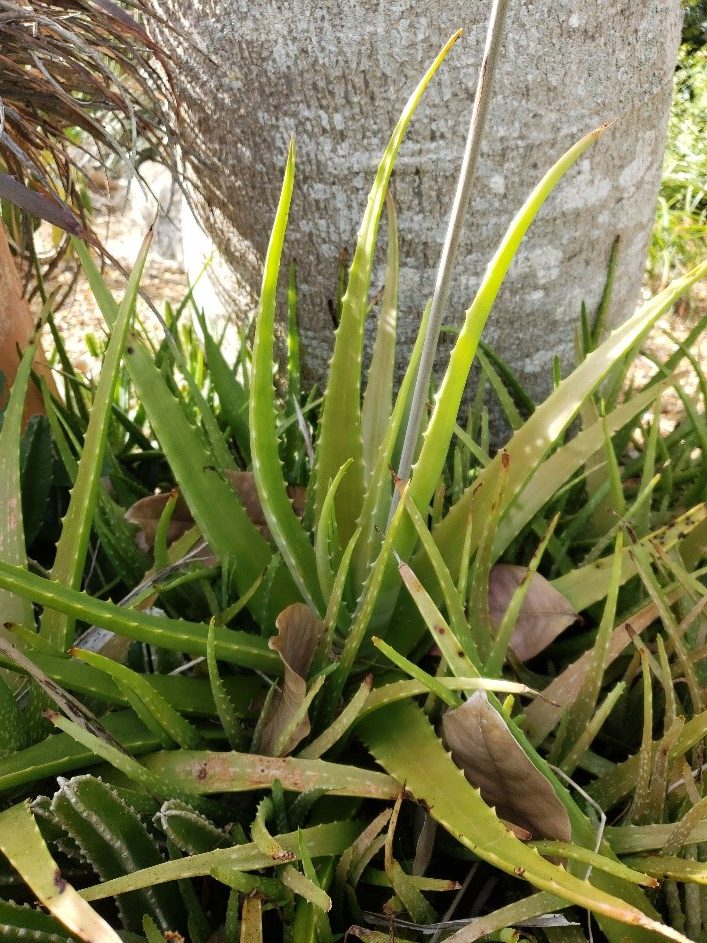
Aloe vera or True Aloe (photo by Shawn McCourt
Native to SE Arabian peninsula, but widely cultivated
